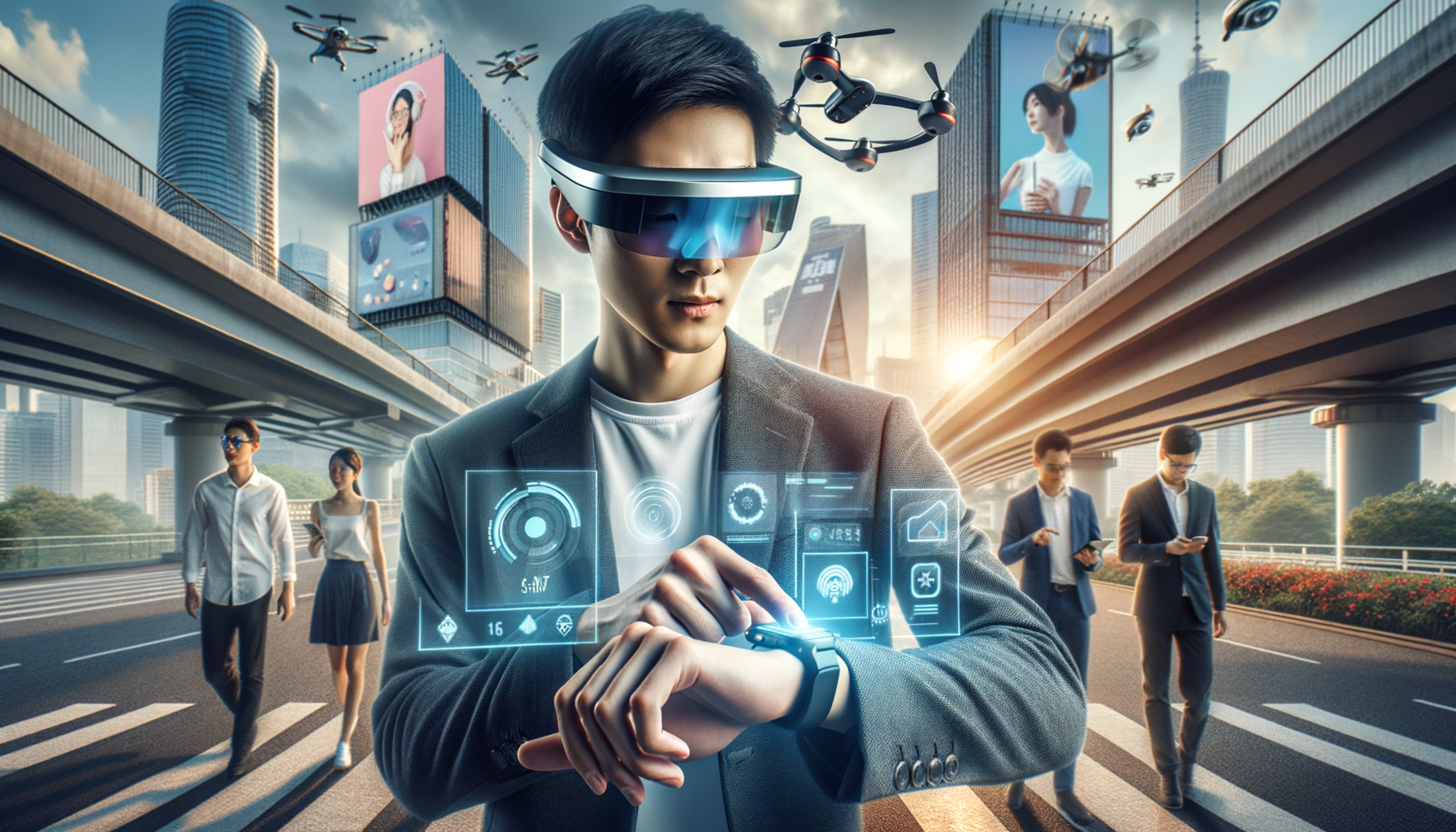The Rise of Wearable Technology: Transforming the Future
In today’s digitized world, wearable technology has taken center stage. From fitness enthusiasts to tech-savvy professionals, wearable devices are becoming integral parts of our daily lives. These innovative gadgets enable users to monitor their health, stay connected, and achieve their goals seamlessly. In this article, we explore the most compelling aspects of wearable technology and how it is reshaping our future.
The Pioneers: Smart Watches
Smartwatches have transcended from being simple timekeeping tools to becoming sophisticated personal assistants. Market leaders like the Apple Watch and Samsung Galaxy Watch offer a plethora of features tailored to enhance user experience:
- Heart Rate Monitoring: Real-time tracking to continuously monitor cardiovascular health. This is especially beneficial for individuals with heart conditions or those engaged in regular physical activity.
- GPS Navigation: Provides precise directions and route tracking for outdoor adventures, jogging, or traveling.
- Mobile Notifications: Instant alerts and updates from your smartphone, ensuring you stay connected without the need to pull out your phone.
- App Integration: Seamless connectivity with various apps related to fitness, music, productivity, and more. This integration allows users to manage their lifestyle from a single device.
Lifestyle Enrichment with Smartwatches
Modern smartwatches are designed to adapt to various lifestyles, from the busy professional to the fitness enthusiast. They offer functionalities like making phone-free calls, sending messages, and even accessing smart home controls. The convenience of having a mini-computer on your wrist cannot be overstated; it’s an all-encompassing tool that simplifies and enriches daily living.
Fitness Trackers: Your Health Companion
Fitness trackers are dedicated devices meant to keep a vigilant eye on physical activity. Ideal for both athletes and casual users, popular options such as Fitbit and Garmin boast several key features:
- Step Counting: Tracking daily steps to ensure users meet their fitness milestones.
- Sleep Analysis: Monitoring sleep patterns and providing insights to improve rest quality.
- Calorie Tracking: Recording the calories burned during various activities to aid in weight management.
- Hydration Monitoring: Reminders to stay hydrated, an often-overlooked aspect of health.
Enhancing Daily Activities
Fitness trackers play a crucial role in making physical activity more systematic and rewarding. By offering detailed analysis and goal-setting features, they motivate users to maintain and improve their fitness levels. Advanced models also provide guided breathing exercises to manage stress, making them essential tools for holistic health improvement.
The Future of Health Wearables
Health wearables are seeing significant advancements as healthcare shifts towards a preventive care model. Devices like the Oura Ring and the latest health-focused smartwatches provide users and healthcare professionals with invaluable data:
- ECG Monitoring: Detects irregular heart rhythms, crucial for early diagnosis of cardiac events.
- Oxygen Saturation (SpO2): Measures blood oxygen levels, important for detecting respiratory conditions.
- Stress Tracking: Assesses stress levels through heart rate variability analysis, helping manage mental health.
- Wearable EKGs: Provide real-time data that can be shared with medical professionals, facilitating early diagnosis and intervention for various conditions.
Transforming Healthcare
The integration of wearable technology in healthcare represents a paradigm shift. These devices offer real-time monitoring and data collection, providing insights that were previously difficult to obtain. This seamless blend of technology and healthcare enables proactive management of health, ultimately improving patient outcomes.
Wearable Devices: Beyond the Wrist
The innovation in wearable technology extends far beyond wrist-worn devices. Several pioneering gadgets are enhancing our interaction with the digital and physical worlds:
- Smart Glasses: Google Glass and similar devices offer augmented reality experiences that overlay digital information onto the real world. This technology can be used in various fields, from navigation to medical procedures.
- Wearable Cameras: Ideal for vloggers and adventurers, these cameras capture high-quality footage while users remain hands-free, making them perfect for documenting experiences and creating immersive content.
- Wearable Headphones: These devices not only offer premium sound quality but also integrate fitness tracking and health monitoring, blurring the lines between entertainment and wellness.
Expanding the Horizon
The expansion of wearable technology beyond the wrist opens new frontiers for interaction and utility. Whether it’s providing augmented reality overlays to professionals in complex fields or enabling content creators to capture unique perspectives, these wearables are pushing the boundaries of what technology can achieve.
Benefits and Challenges
Benefits
Wearable technology offers a range of benefits that enhance daily living:
- Convenience: Easy access to essential information and tools without the need for bulky devices.
- Personalization: Devices offer tailored recommendations based on real-time data, ensuring a customized user experience.
- Enhanced Connectivity: Keeping users connected seamlessly, allowing for multi-device synchronization and improved communication.
Challenges
Despite their advantages, wearable technology faces several challenges that need addressing:
- Privacy Concerns: The handling of sensitive health data requires stringent security measures to protect user privacy.
- Battery Life: Striking a balance between advanced functionality and battery longevity remains a challenge for manufacturers.
- Cost: High-end wearables can be expensive, potentially limiting accessibility to a broader audience.
Addressing the Challenges
To mitigate these challenges, manufacturers are investing in robust security protocols, developing more efficient battery technologies, and offering a range of devices at different price points. This ensures that wearable technology remains secure, efficient, and accessible.
Best Practices for Adopting Wearable Technology
Adopting wearable technology can significantly enhance your lifestyle and health. Here are some best practices to ensure you maximize the benefits:
- Identify Needs: Choose devices that align with your lifestyle and specific health goals. Whether it’s for fitness tracking, health monitoring, or staying connected, selecting the right device is crucial.
- Stay Updated: Regularly update your device’s firmware and software to ensure optimal performance and access to the latest features.
- Data Management: Regularly review and secure your data to maintain privacy. Utilize encrypted storage options and be mindful of sharing sensitive information.
- Explore Features: Take full advantage of your device by exploring all available features. Many devices offer functionalities that can significantly enhance your user experience.
Integrating Wearables Seamlessly
By integrating wearables into your daily routine, you can enjoy the seamless blend of technology and convenience. Use them to set and track personal goals, stay connected, and monitor your health effortlessly. Embrace wearables as an extension of yourself, enhancing both your personal and professional life.
Conclusion
As we embrace advancements in wearable technology, it becomes evident that these devices are not just passing trends but pivotal tools that significantly impact our lifestyle and health. By strategically integrating wearables into our daily routines, we can enjoy a seamless blend of technology, convenience, and well-being.
For more insights into the latest in wearable technology and other exciting tech trends, stay tuned to our blog. Check out the sleek designs and innovative solutions our design agency offers to keep you ahead in a constantly evolving tech landscape.





Leave a Reply